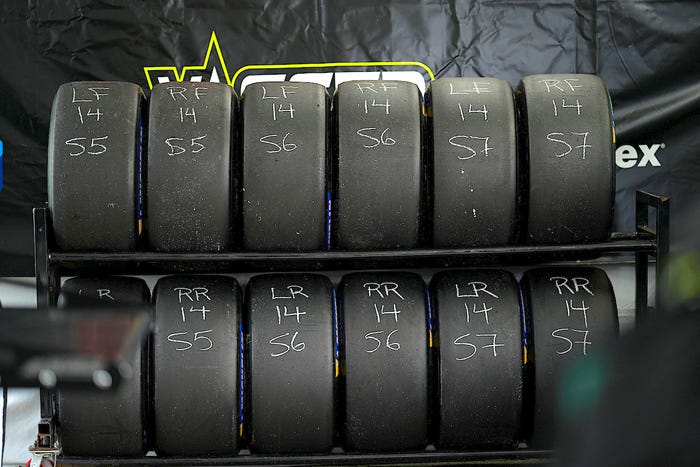Michelin's racing slicks had to provide grip during shockingly cold weather for this year's 24 Hours of Daytona sports car race.

Racing tires for sports cars are designed to provide maximum grip and to withstand the torturous temperatures normally created by friction between the tire and the track surface.
But in this year’s 24 Hours of Daytona sports car race, unusually cold weather meant that the tires had to prove their mettle in conditions better suited to pure winter tires than rip-snorting racing slicks.

Of course, in the event of rain, teams can employ treaded tires to evacuate water from the interface between tires and the road. But in just plain cold weather, they raced with tires that were engineered for peak performance that anticipated much more moderate temperatures.
During this year’s event, which was the 60th running of the Daytona 24-Hour, Michelin-equipped cars racked up 5,517 combined miles during every hour of the race. By the end, Michelin tires had covered 132,421 miles. They did this while the tires (and teams) endured temperatures that dipped to 31 degrees overnight, with a track temperature of 33 degrees.
Incredibly, along the way, teams broke track records for speed despite less-than-ideal grip. “Seeing the track record broken repeatedly in cold overnight conditions is a tribute to our Michelin engineers, who work hard to deliver versatile tires with a wide range of performance,” said Tony Ménard, director of motorsport, Michelin North America.
While this was because the cold, dense air let the cars’ engines make more power than usual, those cars still had to be able to put that additional power to the ground, as well as be able to brake and turn.
Asked whether he’d ever experienced road racing in such temperatures, senior principal motorsports operations manager Hans Emmel replied, “I personally have not.”
However, last season’s racing ended on an uncharacteristically cold note too, with 37-degree temperatures for the Petite Le Mans race at Road Atlanta, which gave Michelin engineers a preview of what to expect at Daytona.
“Going into the event we thought the only issue would be tire warmup,” he said. This meant that drivers would need to drive cautiously during their first lap out of the pits, building heat in the tires carefully. Asking race drivers to go more slowly is easier said than done, however.

Despite that challenge, most drivers got through those treacherous first laps. The teams reduced the exposure to this problem by leaving already-warm tires on the car during pit stops for fuel and having the drivers continue with them for a second stint, said Emmel. “The teams reacted a bit by double-stinting to keep tires on the car. Some teams alternated left and right-side tire changes to keep tires on one side of the car,” he added.
The normal operating temperature of Michelin’s sports car racing tires is between 180 and 200 degrees, and the teams were able to get their car’s rubber surprisingly close to that in the extreme cold. “I don’t think we saw a lot of 200-degree temperatures during the race, but they were approaching 180 degrees,” Emmel said.
“It is a testament to our design team, the tire development team, that we can operate at 32 degrees at Daytona and the use same tire at Watkins Glen in the summer when it is 90 degrees.”
But enough about the tires’ rubber compounds, how did Michelin’s trackside engineers and technicians survive the cold? “For our team, it was dressing appropriately, and taking breaks periodically,” he said.
About the Author(s)
You May Also Like





